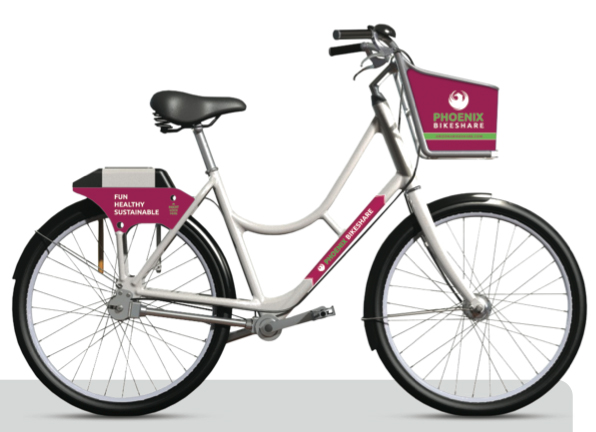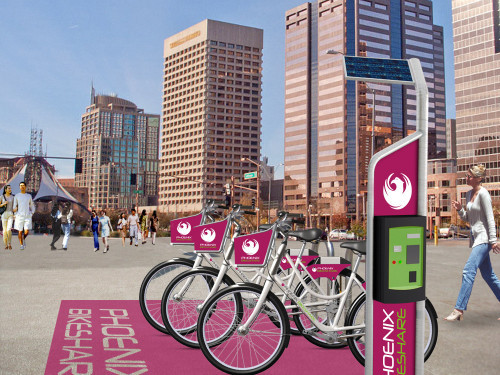- Things to do
- Eat & Drink
- Music
- Pro Sports
- Getting Around
- Shopping & Services
- Hotels
- Arts & Culture
- Tours
- What’s Happening
Browse by category
Editor’s Note: We’re getting a bike-share, y’all The City of Phoenix selected a team consisting of CycleHop, Social Bicycles and SandVault to fund, deploy, operate and supply equipment for the program. We’re looking at about 300 to 500 bikes and around 30 stations up and running by the end of the year.
To celebrate this, and see how bike shares have gone over in other cities, we invited Karina Yudharto – a D.C. resident – to give us a sneak peak of their bike share program and what we might expect.
 The bike-share system in D.C. is revolutionary.
The bike-share system in D.C. is revolutionary.
Our new regional-transit alternative doesn’t require endless construction of subway tunnels or roads nor contribute to pollution or traffic congestion.
Instead, the bike-share program unites the community to get people riding—and sharing—bikes as a reasonable, cost-efficient form of public transit for short-distance travel. The utility of public bikes, open to anyone, anywhere, 24/7, is faster than walking, and cheaper than trains and cabs.
The D.C. bike-share program, called Capital Bikeshare (or, affectionately, CaBi), unites Washington, D.C., Arlington and Alexandria, VA on one bike system. It launched only two-and-a-half years ago in September 2010 and, despite its youth, it was the largest program in the nation with 201+ stations and 1,800+ bikes until New York City unveiled their program last month.
NYC’s Citi Bike program has 6,000 bikes and 330 stations throughout Manhattan and Brooklyn. NYC selected Alta Bicycle, the same Portland-based company that helped install and manage CaBi and other bike-sharing programs in Australia, Europe and China.
There’s a major difference between CaBi and Citi Bike, though. Each Citi Bike is being used only once per day, compared to about three times per day in D.C. Moreover, D.C. has 306,000 daily members whereas NYC has zero.
That difference is space.
While NYC’s population is 13 times larger than D.C.’s, it’s our wider streets, quieter corners, gravel paths and flatter grounds that make it an ideal city to navigate by bike. The ample space allows for drivers, pedestrians and bike-stations to co-exist amicably—much as I believe they will in Phoenix.
While most D.C.-ists are fans of the bike-share concept, we had a bit of a rough start over the lack of bike protocol and helmets. D.C.’s solution will come from increasing bike lanes and working to encourage both the bike share community and drivers to observe, practice and value good bike etiquette. That, and a BYOHelmet attitude. (D.C., like Phoenix, doesn’t require helmets for bikers, but they are strongly recommended.)
 So what lies ahead for Phoenix?
So what lies ahead for Phoenix?
Once you have bike-share stations nearby, your transportation options will expand exponentially. You will no longer be limited to driving short distances, waiting for light rail or bus, or walking in the heat. Instead, you can just hop on a bike and go wherever you need quickly and easily.
The process is seamless. Grab a comfortable bike—which is all of them—and take it for a spin. There is no need to worry about locks since the bikes are docked, repairs are done by management and every bike comes fully loaded with three speeds, solar-powered lights and a sturdy basket with a bungee cord. What’s more, it’s an alternative exercise when you miss the gym (cycle away the guilt!). Finally, as a member, you get discounts and perks on all sorts of fun.
It’s going to be a magnificent addition to the Valley.
Have fun, feel good and enjoy the bike-share life, Phoenix!